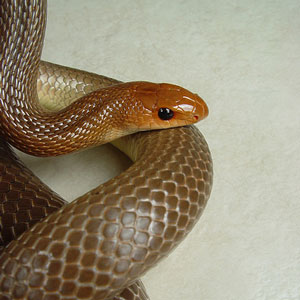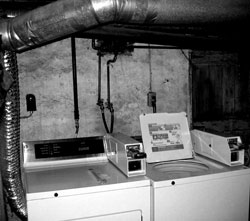So You Think You Have a Snake in the House!
By Chris Williams on October 7, 2013.
 You’re hearing strange noises. You thought you saw something out of the corner of your eye. Your dog seems excited. You’ve seen a snake in your yard so you know they’re around. Now you’re worried that one has gotten into your house.
You’re hearing strange noises. You thought you saw something out of the corner of your eye. Your dog seems excited. You’ve seen a snake in your yard so you know they’re around. Now you’re worried that one has gotten into your house.
Snakes do occasionally end up inside, sometimes by accident and sometimes when they follow their prey into the crawlspace, garage, or basement. They’re also attracted indoors by cool, dark, damp situations or protected places to spend the winter. Snakes sometimes hibernate in homes, especially in the basements of old homes with stone foundations.
Signs of Snakes Indoors
It’s not always easy to find evidence of snakes because they leave no damage behind (other than psychological!). They don’t chew new openings to get inside like mice; they use existing openings. Once inside they may remain in hiding for months. Hibernation is usually from October or November to March/April. Understand that it is extremely difficult to find a snake inside. These are some of the things you can look for to confirm the presence of a snake around the house:
Shed skins
Most snakes molt or shed their skin several times a year as they grow. The dry, tube-like shed skin is usually in one or a couple of large pieces or may be crumpled in a heap. An expert can identify the snake by its shed skin.
Slither tracks
In a soft dirt crawlspace or on a dusty floor, you may see curved S-shaped tracks that could lead you to where the snake is hiding.
Hiding areas
 Snakes like cool, damp, dark areas. In homes, they are most likely to be on the lowest level in crawlspaces, cluttered basements, in laundry or utility rooms, or wherever mice can be found. Use a long stick or pole to probe under and behind boxes or piles of stacked materials. Check under and behind furnaces, water heaters, etc. Snakes can also be found in firewood piles, and sometimes even in attics if there is a mouse or bat infestation there.
Snakes like cool, damp, dark areas. In homes, they are most likely to be on the lowest level in crawlspaces, cluttered basements, in laundry or utility rooms, or wherever mice can be found. Use a long stick or pole to probe under and behind boxes or piles of stacked materials. Check under and behind furnaces, water heaters, etc. Snakes can also be found in firewood piles, and sometimes even in attics if there is a mouse or bat infestation there.
Odor
Many snakes such as the garter snake, black racer, rat snake, and ring-necked snake may emit a foul, musky smell when handled or threatened.
Scat
Snake droppings (scat or feces) are distinctive. They have two-parts: a liquid white/yellow portion (similar to bird droppings) along with a brown, long stool that may contain bones or hair from its prey.
Try a Moist Shelter Trap
One way of luring a snake out of hiding is to place a pile of damp burlap bags (or old towels or rags) in a corner near where a snake has been seen or is suspected. Allow a day or two for the snake to find the damp shelter. Use a snow shovel to lift the entire pile (hopefully with the snake) and dump it into a plastic bag. Take the bag outside and, using a pole, separate the pile and release the snake. Snakes should not be killed unnecessarily. Nonpoisonous snakes are protected by law in most states. Know the common snakes in your area and which are venomous.
If you don’t find the snake, don’t panic. It wants to stay away from people. It usually will find its way back outside, in time, without any help. In the meantime, if you have a mouse problem in your house, getting rid of the mice will help convince the snake to move on.
Photo credit: batwrangler / Foter / CC BY-NC-ND